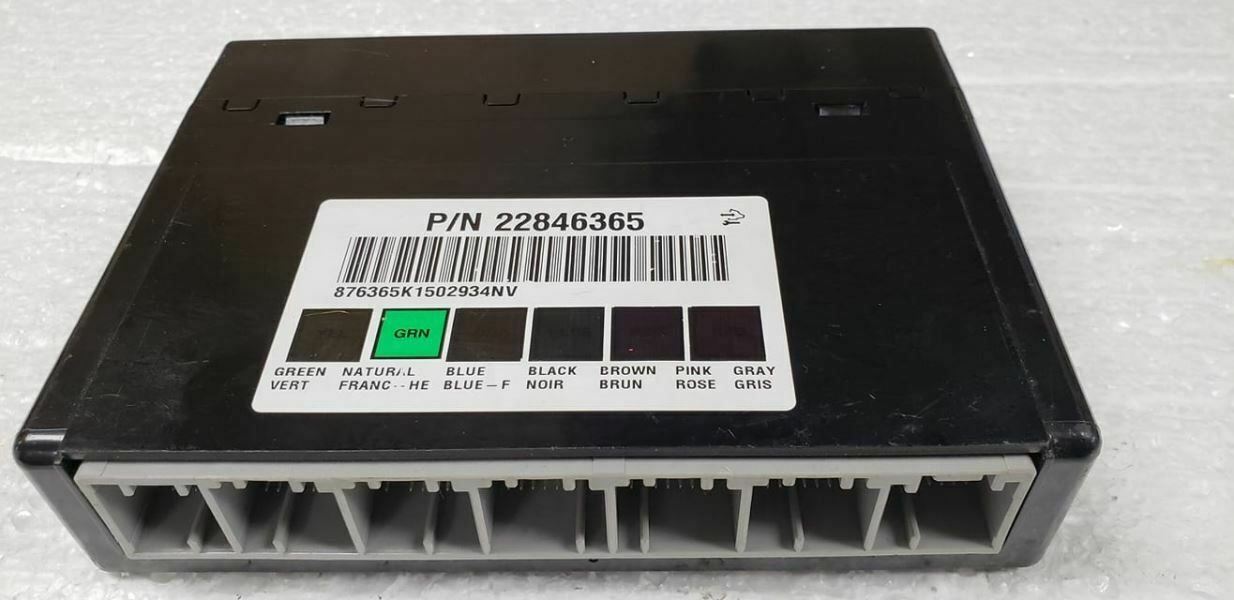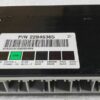If you’re dealing with baffling electrical issues in your GM truck or SUV, you’ve come to the right place. As a technician with over two decades of experience, I know how frustrating it can be when your power windows have a mind of their own, your dash lights flicker randomly, or your truck refuses to start for no apparent reason. These aren’t just annoyances; they’re classic signs of a failing Body Control Module (BCM), the central command center for your vehicle’s electronics.
This isn’t just a replacement part; it’s a complete solution. We take a genuine GM BCM, load it with the latest official software, and program it specifically to your vehicle’s VIN before it ever leaves our facility. This means you can skip the expensive dealership visit for programming. You get a part that’s ready for installation right out of the box, restoring the reliability and function you depend on every day.
Is Your Truck Showing These Symptoms?
A failing BCM can cause a cascade of confusing problems. If you’re noticing any of the following, it’s a strong indicator that your BCM needs attention:
- ✔ Erratic or non-functional power windows, door locks, or interior/exterior lights.
- ✔ The security or anti-theft system light stays on, preventing the engine from starting.
- ✔ False warnings on the dashboard, such as “Service Stabilitrak” or “Service Traction Control.”
- ✔ Intermittent issues with the radio, climate control, or instrument cluster gauges.
- ✔ Diagnostic trouble codes (DTCs) related to communication errors, like U0140, U0155, or other U-codes.
- ✔ Unexplained battery drain that leaves you with a dead battery overnight.
From the Diagnostic Bay
I recently had a 2013 Silverado 2500 in the shop with a ghost of a problem. The owner said his dome lights would flicker, the radio would cut out, and occasionally the horn would honk when he used the turn signal. He’d already replaced the battery and checked all the fuses. After connecting my scan tool, I saw a dozen communication loss codes pointing everywhere. This is a classic BCM failure. The module was creating so much noise on the data bus that other modules couldn’t communicate. We installed a VIN-programmed BCM like this one, and every single issue vanished. It’s a textbook example of how this single component can restore order to the entire vehicle.
A Straightforward Guide to Installation
Replacing your 2012-2013 Sierra BCM is a manageable job for a DIYer with basic tools. The module is typically located under the driver’s side of the dashboard, near the steering column.
- Safety First: Always disconnect the negative terminal from your vehicle’s battery and wait at least 10 minutes before starting work.
- Access the BCM: You may need to remove the lower dash panel or knee bolster to get a clear view of the module. It’s usually held in place by a few small bolts or clips.
- Disconnect and Remove: Carefully unplug the electrical connectors. They have locking tabs, so be gentle. Once all connectors are free, unbolt the old BCM and remove it from the vehicle.
- Install the New BCM: Mount your new, pre-programmed BCM in the same location and secure it. Reconnect all electrical connectors, ensuring they click firmly into place.
- Final Steps: Reinstall any panels you removed and reconnect the battery terminal. Start the vehicle and verify that all electronic functions are working correctly.
Important Post-Installation Information
While our programming handles the heavy lifting, some GM vehicles require a final handshake between modules after installation. Be aware of these potential procedures:
- ✔ Airbag System Sync: If the airbag warning light is on after installation, a professional scan tool is needed to perform the ‘Setup SDM Primary Key in BCM’ procedure. This syncs the new BCM with the airbag system.
- ✔ Brake Pedal Position Relearn: On some models, a brake pedal position sensor relearn might be necessary to ensure correct brake light and stability control operation.
Disclaimer: Always consult a factory service manual or a qualified technician if you are unsure about any step. Procedures can vary slightly by exact model and options.
Verified Vehicle Compatibility
This module is a direct-fit replacement for part numbers 22846365, 22737275, and 22846364, and is guaranteed to fit the following vehicles:
- ✔ 2012-2013 Chevrolet Avalanche 1500
- ✔ 2012-2014 Cadillac Escalade, Escalade ESV, Escalade EXT
- ✔ 2012-2013 Chevrolet Silverado 1500 / GMC Sierra 1500
- ✔ 2012-2014 Chevrolet Silverado 2500/3500 / GMC Sierra 2500/3500
- ✔ 2012-2013 GMC Sierra Denali 1500
- ✔ 2012-2014 GMC Sierra Denali 2500/3500
- ✔ 2012-2014 Chevrolet Suburban 1500 / GMC Yukon XL 1500
- ✔ 2012-2013 Chevrolet Suburban 2500 / GMC Yukon XL 2500
- ✔ 2012-2014 Chevrolet Tahoe / GMC Yukon
Frequently Asked Questions
Do I need to send my old BCM back?
No. This purchase comes with no core charge. You can keep your original module without any extra fees or hassle.
Is this part difficult to install?
The physical replacement is straightforward for most DIYers with basic tools. It’s located under the steering column and involves removing a few panels and connectors. Our pre-programming service eliminates the most difficult part: the software configuration.
What information do you need from me?
After you place your order, we simply need your vehicle’s 17-digit VIN (Vehicle Identification Number). This allows us to program the BCM with the correct software and vehicle-specific options for a seamless installation.
Will this fix my “Service Stabilitrak” warning?
A failing BCM is a very common cause of false “Service Stabilitrak” and other system warnings. By restoring proper communication between all vehicle modules, this new BCM often resolves those issues.
What if my airbag light comes on after I install it?
This is an occasional security measure on some GM vehicles. It simply means the new BCM needs to be electronically introduced to the airbag module (SDM). A repair shop with a professional scan tool can perform the ‘Setup SDM Primary Key in BCM’ procedure in a few minutes to clear the light.



